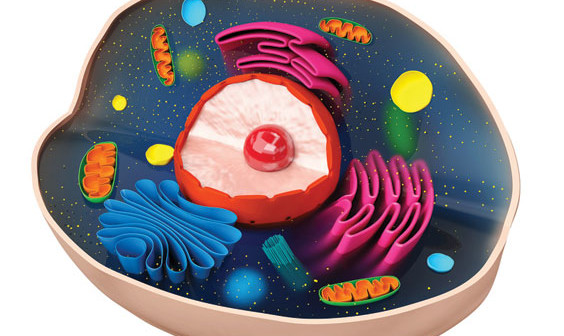This year’s most popular research stories include scientific breakthroughs in COVID-19, cancer, schizophrenia and more.
As we bid farewell to 2021, let’s celebrate our most newsworthy research breakthroughs. Despite the continuing challenges brought on by COVID-19, Sanford Burnham Prebys achieved important milestones on the frontiers of biomedical science.
The following 10 research-related stories received top views on Newswise—the press release distribution service for journalists seeking health and science news.
- COVID-19: Scientists identify human genes that fight infection
A research team was able to pinpoint specific human genes that control viral infection. The information sheds new light on factors that lead to severe disease and guides therapeutic options. - Tumor marker may help overcome endocrine treatment-resistant breast cancer
The study discovered a new approach to select breast cancer patients for HER2 therapy and could help individuals avoid disease relapse or progression of endocrine-sensitive disease. - Scientists identify potential drug candidates for deadly pediatric leukemia
Two existing drugs—JAK inhibitors and Mepron—show promise for a subtype of acute myeloid leukemia (AML) that is more common in children. The drugs are proven safe in humans, which could accelerate clinical studies. - Leprosy drug holds promise as at-home treatment for COVID-19
Scientists found that the leprosy drug clofazimine, which is FDA approved and on the World Health Organization’s List of Essential Medicines, exhibits potent antiviral activities against SARS-CoV-2, and could become an important weapon against future pandemics. - Researchers dig deeper into how cells transport their waste for recycling
Research describing how the “trash bags” in a cell—called autophagosomes—are tagged for recycling opened new paths to understand age-related diseases such as cancer and neurological disorders. - New drug combination shows promise as powerful treatment for AML
Researchers identified two drugs that are potent against acute myeloid leukemia (AML) when combined, but only weakly effective when used alone. The study provides a scientific rationale for advancing clinical studies of the drug combination. - Biomarker could help diagnose schizophrenia at an early age
A study described how elevated levels of a protein called CRMP2—found in the brain and blood—could become a format for a rapid, minimally invasive blood test to support the diagnosis of schizophrenia. - Scientists identify “immune cop” that detects SARS-CoV-2
Researchers discovered the sensor in human lungs that detects SARS-CoV-2 and signals that it’s time to mount an antiviral attack. The sensor activates interferon, the body’s own frontline defender against viral invasion. - Study finds promising therapeutic target for colitis
Scientists identified an enzyme in the gut that triggers an inflammatory cascade leading to colitis. Therapeutically targeting the enzyme may be a viable approach to help the millions of people worldwide affected by the disorder. - Scientists shrink pancreatic tumors by starving their cellular “neighbors”
For the first time, blocking “cell drinking,” or micropinocytosis in the thick tissue surrounding a pancreatic tumor, was shown to slow tumor growth—providing more evidence that micropinocytosis is an important therapeutic target.

